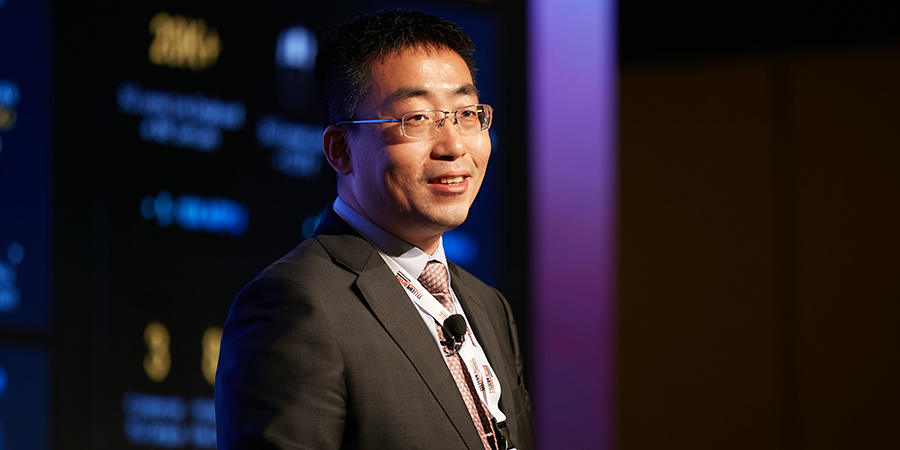By An Jian, President of Carrier Network Business Group, Huawei Middle East
In the past five years, the biggest progress in our industry has been 5G. We all know that, beyond the consumer market, 5G is now bringing new revenue streams to carriers and enabling carriers to deeply participate in the digital transformation of other key industries.
Nevertheless, 5G’s development is only one part of the changes we're seeing in the world. In addition, there are other key trends that will have a long-term impact on our industry.
For one, vertical industries’ digital transformation has accelerated greatly during the pandemic, by some estimates accelerating by as much as seven years. Right now, for instance, 81% of enterprises use cloud-based applications. According to Gartner, Enterprise ICT spending is projected to total USD16 trillion in the next five years. The governance budget spends more on OPEX than CAPEX, and 65% of CIOs from verticals indicate that they would prefer to purchase outsourced services rather than self-built IT systems. More and more enterprises are willing to purchase full-stack IT services instead of fragmented services. These trends require greater connectivity and cloud capabilities which present tremendous opportunities for carriers. Take China as an example. In 2020, China Mobile’s ICT basic services increased by 59.4%, compared with 2019. Its B2B business grew rapidly, reaching 34.6%, and its cloud services increased by 353.8%.
According to the World Economic Forum, by 2030 digital technology could also help reduce global carbon emissions by 15%. Building a green ICT network will not only cut emissions and improve power efficiency. It will help realize significant OPEX saving, which is a key target that all carriers are pursuing. It is recognized as instrumental for their sustainable development and to fulfill their social responsibility.
All these factors require the telecom industry to be persistent in innovation across multiple domains. These include connectivity, cloud services, industry solutions, energy saving and emission reduction, and more. On the one hand, this innovation will lead to continuously reducing costs and improving efficiency. On the other hand, it will lead to unprecedented and extraordinary service experiences for end users.
Only by doing both can carriers stand out from their traditional telco competitors and hyperscalers, setting sail to a new blue ocean.
Persistence in ICT technological innovation for vertical digitization
According to a recent FlexEra state of cloud report, 92% of enterprises will choose multi-cloud/hybrid cloud for access. In the next five years, given the size of the Middle East cloud market, carriers’ participation could increase from USD2.3bn in 2021 to more than USD5.6bn in 2025. These kinds of services highly rely on the network’s guarantee of quality of service.
In this regard, carriers possess the natural capabilities to deploy, run, operate, and optimize a connectivity network securely and reliably. Meanwhile, governments and large enterprises generally trust carriers to a higher degree, encouraging more and more carriers to explore opportunities in vertical industries.
To match carriers' strategies, Huawei has deeply engaged in R&D across multiple domains, including:
- Network: As the cornerstone, the seamless network is the priority to meet industry-oriented connection requirements. We continuously innovate RAN technology that facilitates ubiquitous 5G gigabit experiences across different scenarios. Our latest 5G RAN portfolio improves both coverage and energy efficiency through algorithms, architecture, and through software/hardware integration. 5G deployment is also simplified at sites with limited antenna space, and enables operators to utilize fragmented spectrum. Furthermore, through joint innovation in more than 5,000 5GtoB projects around the world, unique technologies such as 5G super uplink and 5G+X (AR, remote control, etc.) applications are delivered for on-demand requirements. With our continuous innovation in RAN, it will continue to focus upon user experience and industry demand, to take the consumer experience to new heights and bring digital to all industries.
- Cloud-network synergy: Carriers have the unique advantage to be able to optimize enterprises’ multi-cloud access using the network. Carriers can offer bespoke service requirements to different organizations based on their size, objectives, and vertical. By doing so, they are guaranteeing SLAs for various services and improving the user experience overall. With innovations in SDN and SRv6, for example, we are supporting carriers to achieve the four ‘ones’ experiences for enterprises: ‘one’ hop to cloud, ‘one’ network for multiple clouds, ‘one’ click to fast scheduling, and ‘one’ connection for multiple services.
- Cloud services: The development trend of cloud services has gone from traditional IT services to virtualization, and now to cloud-native. Together with developers and partners in the cloud market, today we can provide more than 220 types of cloud services. We work with more than 100 local cloud service partners in all countries across the Middle East. From NaaS to PaaS, IaaS, and SaaS, we have built a full-stack solution to enable the evolution of traditional IT services in the Middle East to be cloud-native.
Persistence in innovation for OPEX saving
The launch and expansion of 5G makes users' traffic consumption at least 5 to 10 times greater than 4G, which brings new value but also makes the telecom industry pay even more attention to network energy consumption. Sites and data centers are the most power-hungry assets in our industry.
To support green development models and carbon neutrality, we are continuously innovating at multiple levels including equipment, sites, networks, and O&M for reducing costs and improving efficiency.
- At the site level, our latest simplified site solutions help carriers to lower labor cost, energy consumption and rent cost through lightweight devices and compact form factors, using new materials and algorithms. Now in our latest 5G RAN portfolio, the lightest one could be carried and installed by one person. Furthermore, through algorithms and software/hardware integration, it enables efficient coordination between 4G and 5G networks for operators, which improves network capacity and the user experience.
- At the equipment level, we use components with higher power efficiency to make hardware platforms more energy efficient. With our innovative solutions, for example, 5G equipment working in low and high bands can share a cabinet. As a result, less energy is used.
- At the network level, we have launched a multi-band and multi-RAT power saving solution. This solution can cut energy consumption in wireless networks without compromising network performance. When it comes to multi-band equipment power saving, our goal is to make the traditional one-plus-one model less than one.
- At the O&M level, we're now using AI to enable more intelligent management techniques such as mobile network intelligent power saving, and intelligent energy optimization for Data Centers that optimizes heat and power management.
More innovations can bring even greater intelligence and enable digital management for carriers to realize “more bits with less watts”, cutting emissions and achieving OPEX savings moving forward. Finally, they can realize a “green network” to implement corporate social responsibility and sustainable development.
Creating the future
In conclusion and as we look to engage partners during this year’s MWC Barcelona exhibition, we feel strongly that the best way to predict the future is to create it. After decades of development, we are now in the midst of digitalization in nearly every industry. This creates new value for individuals and society. For telecom carriers, the future network evolution is to further reduce infrastructure costs, improve O&M efficiency, and—much more important—seize the historic opportunity of industry digitalization, setting sail to a new blue ocean. These are the most powerful engines for the telecom industry to move toward a new blue ocean. At Huawei, we remain unwavering in our commitment to standing together with carriers to innovate in areas like 5G, cloud, and industry applications, creating new business value and lighting up the future of the Middle East.











